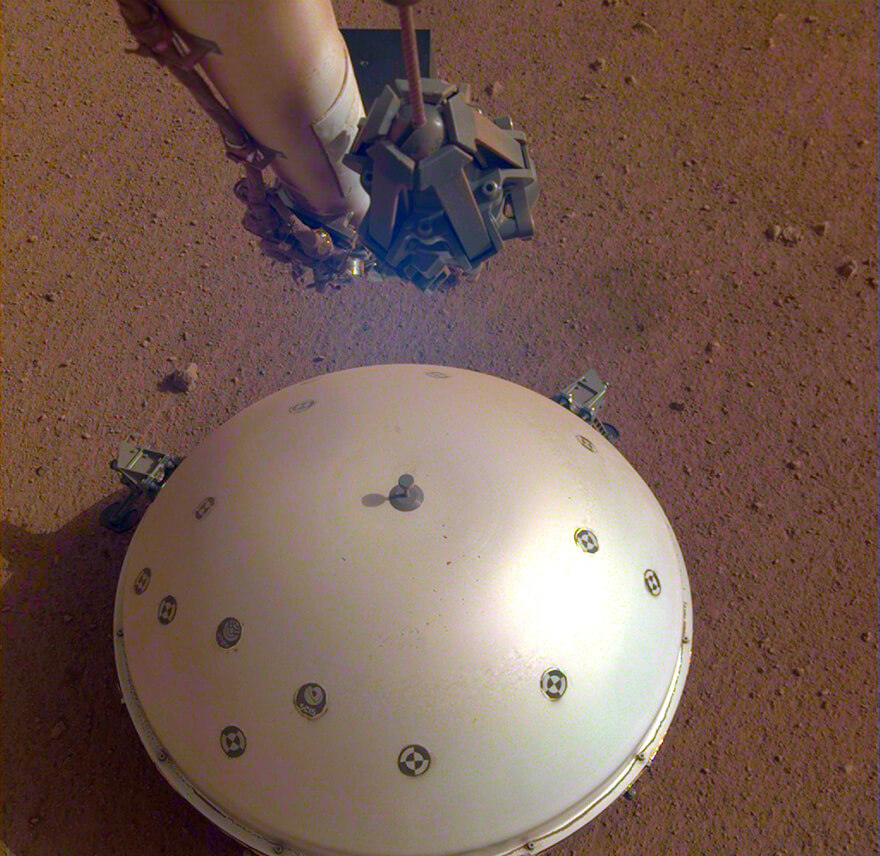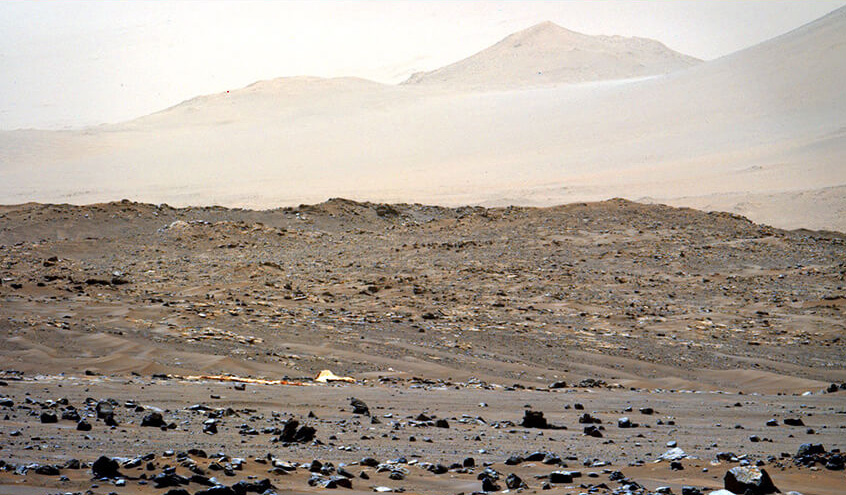There are seven of them in total. Seven Telespazio engineers and technicians based in Toulouse who live on Martian time – and even Martian working hours, since one day on Mars is the equivalent of around 24 hours and 40 minutes. That slight difference means they have to adjust their working hours a little every day, adding to the immersive nature of the experience. Led by NASA in cooperation with CNES and French laboratories, their mission within this operational cycle involves programming the scientific instruments on board the two rovers and the lander, and making sure they function properly. “For the Perseverance and Curiosity rovers, programming the instruments means for example sending orders to plan laser shots on rocks. For the InSight lander, we program the French seismometer SEIS to record seismic activity and detect any tremors on Mars. The aim here is to find out more about the planet’s structure. Our role is to enable scientists to carry out the observations they have designed as effectively as possible, guaranteeing the safety of the instruments via a set of tools and procedures,” explained Laurent Peret, who coordinates the Telespazio team. Since each instrument relies on a multi-instrument platform, the team also makes sure the instruments share the platform’s resources (memory, energy, bandwidth, and so on) in the best possible way. “For each activity, we define a model that tells us that such and such an activity will consume so many watts, produce so many megabytes of data, last for so many minutes, etc. It goes without saying that this is very important for missions of this size and complexity.” That complexity, combined with the small but mighty team that handles it, creates a truly commando spirit.
Incredibly dynamic operations
The same goes for the dynamic nature of these pioneering scientific operations. “As we make progress exploring the planet, and as the rovers move from place to place over time, our scientific colleagues are inspired to suggest new observations, new ways of using the instruments… We receive images every day, and a simple shot of an interesting rock on one of the photos can spark a whole new area of discovery. These last-minute changes are very stimulating for us. Not to mention the simple fact of being involved in scientific missions that help us find out more about Mars, and the solar system in general.” That goal has already been achieved, because every instrument has already notched up a host of first-rate discoveries.

Major discoveries
“The most recent discoveries include the detection by InSight of Mars’ biggest tremor in three years. With a magnitude of 5 on the Richter scale, the quake wouldn’t be a big deal here on Earth, but it is the Big One we’ve all been waiting for since the start of the mission. Scientists are now working to understand where the quake came from, what caused it, and what it tells us about Mars’ internal structure.
In other news, thanks to the microphone fitted on the SuperCam, Perseverance was recently able to measure the speed of sound on Mars – the first time such a feat has been achieved on the surface of another planet. We have also made substantial progress on issues such as atmospheric turbulence and how high-frequency waves are attenuated with distance. Finally, Curiosity has recently made discoveries about carbon isotopes in methane, observed for the first time in ten years, which are raising a lot of interesting questions. One theory is that the formation of these isotopes may have resulted from biological causes, and could be a sign of ancient life on Mars.”
But what does it feel like to be directly involved in discoveries of this magnitude, almost every working day? To see images that no-one else has ever seen, in the entire history of humanity?

Telespazio people are Earth-based Martians
“For a group like ours, it is clearly extremely gratifying to see the operations we run from Toulouse being carried out on another planet and, as part of Telespazio, to be a stakeholder in this tiny club of Earth-based Martians. Being part of such a cutting-edge, innovative, discovery-oriented ecosystem make us incredibly proud, as well as being a fantastic growth driver and image-booster for the company as a whole, and the women and men who steer it along this path of excellence.” What will be the next step for the Telespazio team after Mars? “For Telespazio, the various short- and medium-term scientific missions focusing on exploration of the Universe will naturally draw on the technological and human progress acquired through these missions on Mars. We all have our sights set on the Moon, exploration of Saturn’s moons, and so on… Regardless of whether we go down that path with NASA, the ESA, CNES or the French laboratories involved in this type of program, very often under the aegis of CNES, we are now the go-to company in a prime position to be part of each new adventure,” Laurent Peret summed up, with more than a glint of stars in his eyes…

Photos credits: NASA-JPL/Caltech/ASU/MSSS

